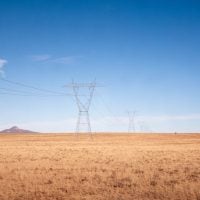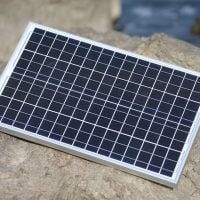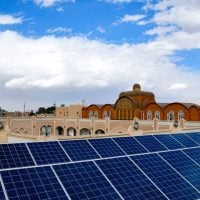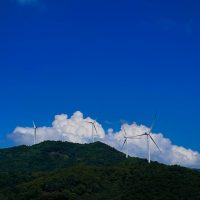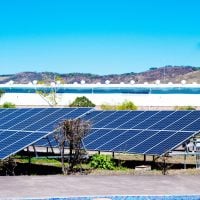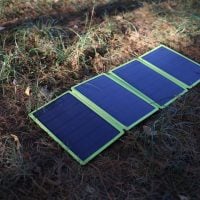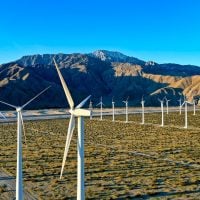Grant reporting is a critical component of the relationship between non-governmental organizations (NGOs) and their energy donors. It serves as a bridge that connects the funding provided by donors to the tangible outcomes achieved through various energy conservation and sustainability initiatives. For NGOs, effective grant reporting is not merely a bureaucratic obligation; it is an opportunity to showcase the impact of their work, build trust with donors, and secure future funding.
In the energy sector, where projects often require significant investment and long-term commitment, clear and comprehensive reporting can make a substantial difference in how donors perceive the value of their contributions. The importance of grant reporting extends beyond compliance; it is a vital tool for storytelling. By articulating the journey of a project—from inception to execution—NGOs can illustrate how donor funds have been utilized effectively.
This narrative not only highlights successes but also acknowledges challenges faced along the way, fostering transparency and accountability. As the energy landscape evolves, so too do the expectations of donors, making it essential for NGOs to stay informed about best practices in grant reporting. Are You Working on Solar Innovation or Clean Energy Access? Join us to receive updates.
Key Takeaways
- Grant reporting for energy donors is essential for demonstrating the impact of funding on energy conservation and sustainability initiatives.
- Understanding the requirements and expectations of energy donors is crucial for effectively meeting their reporting needs.
- Gathering and organizing data for grant reports should be done systematically to ensure accuracy and completeness.
- Creating a clear and concise narrative in grant reports helps to effectively communicate the impact of the grant on energy conservation and sustainability.
- Including financial and budgetary information, success stories, testimonials, and visual aids in grant reports enhances the overall effectiveness of the report.
Understanding the Requirements and Expectations of Energy Donors
To create effective grant reports, NGOs must first understand the specific requirements and expectations of their energy donors. Each donor may have unique guidelines regarding what information should be included, how it should be presented, and the frequency of reporting. Familiarizing oneself with these requirements is crucial for ensuring compliance and maintaining a positive relationship with funders.
Many donors provide templates or guidelines that outline their expectations, which can serve as a valuable starting point for NGOs. Moreover, understanding the broader context in which energy donors operate can enhance the quality of grant reports. Donors are often interested in how their funding aligns with larger goals, such as national energy policies or international climate agreements.
By framing reports within these contexts, NGOs can demonstrate their awareness of the bigger picture and how their projects contribute to global sustainability efforts. This alignment not only strengthens the case for continued funding but also positions NGOs as proactive partners in achieving shared objectives.
Gathering and Organizing Data for Grant Reports

Data collection is a foundational step in preparing grant reports. NGOs must gather quantitative and qualitative data that accurately reflects project activities and outcomes. This process often begins with establishing clear metrics for success at the outset of a project.
By defining key performance indicators (KPIs) early on, organizations can streamline data collection efforts and ensure that they are capturing relevant information throughout the project lifecycle. Once data has been collected, organizing it effectively is essential for clarity and coherence in reporting. Utilizing spreadsheets or project management software can help NGOs track progress against established KPIs systematically.
Additionally, categorizing data into sections—such as project activities, outcomes, and financial expenditures—can facilitate easier navigation for both report writers and readers. A well-organized data set not only enhances the quality of the report but also allows for more insightful analysis of project performance.
Creating a Clear and Concise Narrative for Grant Reports
A compelling narrative is at the heart of any successful grant report. It is essential to weave together data and insights into a coherent story that captures the essence of the project. This narrative should begin with an overview of the project’s objectives, followed by a description of activities undertaken and the results achieved.
Clarity is paramount; using straightforward language and avoiding jargon can help ensure that the report is accessible to all stakeholders, including those who may not have a technical background in energy issues. In addition to clarity, conciseness is crucial in grant reporting. Donors often review numerous reports, so presenting information succinctly can enhance engagement.
Utilizing bullet points, headings, and subheadings can help break up text and make key points stand out. Furthermore, integrating quotes from project staff or beneficiaries can add a personal touch to the narrative, making it more relatable and impactful.
Highlighting the Impact of the Grant on Energy Conservation and Sustainability
One of the primary goals of grant reporting is to highlight the impact of funding on energy conservation and sustainability efforts. NGOs should focus on demonstrating how donor contributions have led to measurable changes in energy use, emissions reductions, or community engagement in sustainable practices. This could involve presenting before-and-after scenarios that illustrate improvements resulting from funded initiatives.
Real-world examples can be particularly powerful in showcasing impact. For instance, an NGO might report on a solar panel installation project that has significantly reduced electricity costs for a community center while also decreasing reliance on fossil fuels. By providing specific data points—such as kilowatt-hours saved or carbon emissions reduced—NGOs can paint a vivid picture of their contributions to energy sustainability.
Including Financial and Budgetary Information in Grant Reports

Financial transparency is a cornerstone of effective grant reporting. Donors expect to see detailed budgetary information that outlines how funds were allocated throughout the project. This includes not only direct costs associated with project implementation but also indirect costs such as administrative expenses or overheads.
Providing a clear breakdown of expenditures helps build trust with donors by demonstrating responsible financial management. In addition to presenting financial data, NGOs should also include an analysis of budget variances—explaining any discrepancies between projected and actual spending. This level of transparency allows donors to understand the challenges faced during implementation and reassures them that funds are being used judiciously.
Furthermore, highlighting any cost-saving measures or efficiencies achieved during the project can enhance credibility and showcase effective resource management.
Incorporating Success Stories and Testimonials from Beneficiaries
Success stories and testimonials from beneficiaries can significantly enrich grant reports by adding a human element to the data presented. These narratives provide insight into how projects have positively impacted individuals or communities, making the report more relatable and engaging for donors. Including direct quotes from beneficiaries can illustrate personal transformations resulting from energy initiatives, such as improved living conditions or enhanced access to clean energy sources.
When incorporating success stories, it is essential to ensure they are representative of broader project outcomes rather than isolated incidents. This can be achieved by selecting stories that reflect diverse experiences within the target population or by highlighting different aspects of the project’s impact. By doing so, NGOs can present a well-rounded view of their work while reinforcing the significance of donor contributions.
Utilizing Visual Aids and Data Visualization Techniques in Grant Reports
Visual aids play a crucial role in enhancing the effectiveness of grant reports. Charts, graphs, infographics, and photographs can help convey complex information in an easily digestible format. For instance, using bar graphs to illustrate energy savings over time or pie charts to depict budget allocations can make data more accessible and engaging for readers.
Moreover, incorporating visuals can break up text-heavy sections of reports, making them more visually appealing and easier to navigate. When using images or graphics, it is important to ensure they are high-quality and relevant to the content being discussed. A well-designed visual not only enhances understanding but also reinforces key messages within the report.
Addressing Challenges and Lessons Learned in Grant Reports
While highlighting successes is important, acknowledging challenges faced during project implementation is equally vital in grant reporting. Donors appreciate transparency regarding obstacles encountered, as this demonstrates an organization’s ability to adapt and learn from experiences. Discussing challenges openly allows NGOs to provide context for any deviations from planned outcomes or budgetary constraints.
In addition to addressing challenges, it is beneficial to include lessons learned throughout the project lifecycle. This could involve reflecting on what strategies worked well, what could have been improved, or how stakeholder engagement could be enhanced in future initiatives. By sharing these insights, NGOs not only demonstrate accountability but also contribute to a culture of continuous improvement within their organization and among their peers in the sector.
Engaging with Energy Donors and Seeking Feedback on Grant Reports
Engagement with energy donors should not end with submitting grant reports; rather, it should be an ongoing dialogue that fosters collaboration and mutual understanding. After submitting a report, NGOs should consider reaching out to donors for feedback on both content and presentation. This engagement can provide valuable insights into donor preferences and expectations for future reports.
Additionally, soliciting feedback demonstrates respect for donor input and reinforces a partnership approach to funding relationships. By actively seeking suggestions for improvement or clarification on specific points within reports, NGOs can strengthen their rapport with donors while enhancing their own reporting practices over time.
Best Practices for Effective Grant Reporting to Energy Donors
In conclusion, effective grant reporting is essential for NGOs working in the energy sector to maintain strong relationships with donors while showcasing their impact on sustainability initiatives. By understanding donor requirements, gathering organized data, crafting clear narratives, highlighting impacts, including financial information, sharing success stories, utilizing visuals, addressing challenges, and engaging with donors for feedback, organizations can create comprehensive reports that resonate with funders. Adopting these best practices not only enhances transparency but also fosters trust between NGOs and their energy donors.
As organizations continue to navigate an evolving landscape of funding opportunities and donor expectations, prioritizing effective grant reporting will remain crucial for securing ongoing support and driving meaningful change in energy conservation efforts worldwide.




